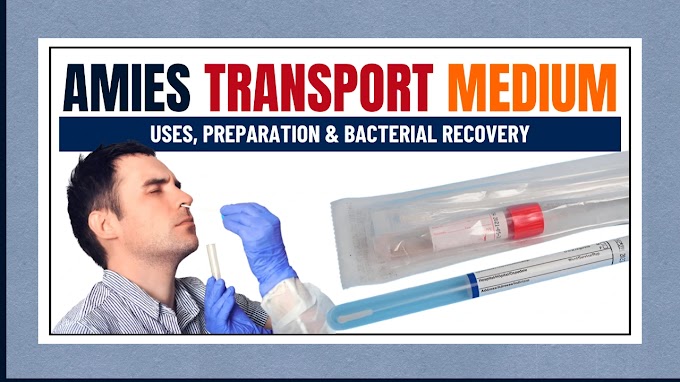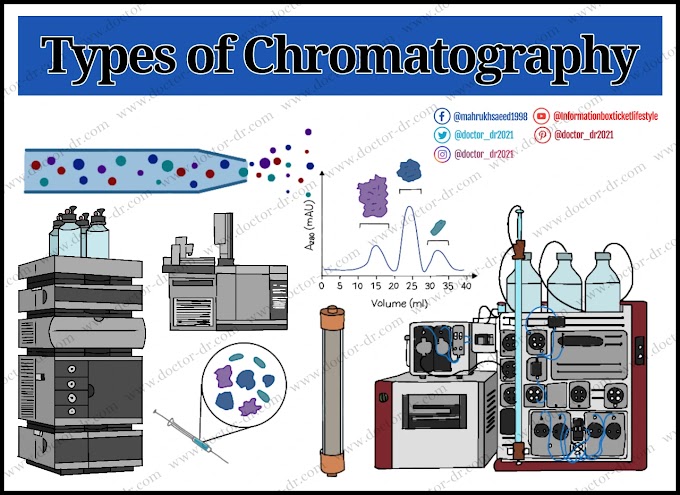The biochemical test known as the carbohydrate fermentation test is used to detect and distinguish various types of bacteria based on their patterns of carbohydrate fermentation.
Different bacterial groups have different dietary needs and biochemical characteristics. Because various bacteria may have distinct enzyme systems, their capacity to use substrates varies. When bacteria consume carbohydrates (sugars), a similar trend is observed: certain bacteria can use one type of sugar while others can't use it at all. Additionally, different bacterial groups may use different modes of metabolism to break down the same sugar. For example, some may use a fermentative mode while others may use an oxidative mode, some may produce acids as an end product while others may produce alcohol, and some may release gas while others may not.
The polyhydroxy aldehydes or ketones, often known as carbohydrates or sugars, are made up of carbon (C), hydrogen (H), and oxygen (O) atoms combined in an empirical combination of Cx(H2O)y. Carbohydrates come in a wide variety of forms and are categorised in many ways. The substrate used in microbiology and carbohydrate fermentation tests typically includes glucose, lactose, sucrose, maltose, mannitol, galactose, starch, rhamnose, aesculin, salicin, dulcitol, sorbitol, cellobiose, xylose, mannose, trehalose, inositol, raffinose, and cellulose.
During the fermentation process, the carbohydrate molecules are anaerobically catabolized into organic acids. Thus produced acid decreases the pH of the medium and compels the pH indicator to change its color.
However, not all bacteria are capable of fermenting the aforementioned sugars. Some of these sugars can be fermented by certain bacterial species, but not all of them. It is possible to divide bacteria into several groups and speed up the process of bacterial identification by using their capacity to ferment a particular type of carbohydrate. The phrase "carbohydrate fermentation test" refers to a procedure used to evaluate a microorganism's capacity and pattern for fermenting carbohydrates.
Table of Contents
- Objectives of Carbohydrate Fermentation Test
- Principle of Carbohydrate Fermentation Test
- Requirement for Carbohydrate Fermentation Test
- a. Culture Media
- b. Carbohydrates
- c. Reagents
- d. Equipment
- e. Test Organisms (Sample Bacteria)
- Procedure of Carbohydrate Fermentation Test
- Result Interpretation of Carbohydrate Fermentation Test
- Fermentation Pattern of Some Common Bacteria
- Precaution
- Applications of Carbohydrate Fermentation Test
- Limitations of Carbohydrate Fermentation Test
Objectives of Carbohydrate Fermentation Test
- To assess the ability of bacteria to ferment a specific carbohydrate.
- To distinguish between different kinds of bacteria and recognise them depending on how they digest carbohydrates.
Principle of Carbohydrate Fermentation Test
Different bacteria have varying capacities for fermenting particular sugars; some can do so while others cannot ferment the same sugar. As a byproduct of fermenting carbohydrates, organic acids are created. The pH of the medium will drop as a result of these generated acids. The pH indicator that is already present in the medium changes colour as a result of the pH drop. (The sort of pH indicator used in the test will affect how the colour changes.)
If the bacteria produce gases during fermenting carbohydrates, they will become trapped in the inverted Durham tube or fermentation tube immersed in the fermentation broth as an air bubble.
The creation of an air bubble in Durham's tube and the change in colour that results from fermentation suggest that the test bacteria were able to use the particular carbohydrate present in the test media.
Requirement for Carbohydrate Fermentation Test
a. Culture Media
This test can be run using carbohydrate broth. The test organism and its source or other components that are accessible in the lab can alter the medium's makeup. In this post, we'll use a mixture based on HiMedia's "Carbohydrate Consumption Broth Base" (M124) with a specific alteration to the pH indicator and the addition of certain carbs.
Composition of Carbohydrate Broth Base per 990 mL
- Proteose Peptone- 10.00 grams
- HM Peptone B (Beef extract)- 1.00 grams
- Sodium Chloride- 5.00 grams
- Phenol Red- 0.018 grams
- (Alternatively, Bromocresol purple 0.100 grams can be used)
Preparation of Carbohydrate Broth
- Dissolve the necessary quantity of media components in 990 mL of distilled water.
- For the test, add 10 grammes of a particular carbohydrate and dissolve by shaking.
- If necessary to achieve total component dissolution, heat to boiling.
- Give each test tube 5 to 7 mL of the broth, or the amount needed to completely cover Durham's tube.
- Make sure there is no air bubble present inside each tube before submerging a Durham tube entirely.
- Place the cap or cotton plug loosely on the tubes and autoclave them for 15 minutes at 1210°C and 15 lbs of pressure.
b. Carbohydrates
Commonly used carbohydrates as substrate in the carbohydrate fermentation test include glucose, lactose, sucrose, maltose, mannitol, galactose, starch, rhamnose, aesculin, salicin, dulcitol, sorbitol, cellobiose, xylose, mannose, trehalose, inositol, raffinose, and melibiose.
c. Reagents
To identify the production of acid in the media, pH indicators are needed. Various pH indicators can be used, including:
- Andrade’s Indicator: light pink at about neutral pH range (7.1 to 7.2), turns dark pink to red at acidic pH (at around or below 5.0 ), and turns yellow at high alkaline pH (about 12 to 14)
- Phenol Red: Reddish orange at neutral (about 7.4 pH), turns yellow at acidic pH (at and below 6.8 pH), and turns pink-red at alkaline pH (at or above 8.4 pH)
- Bromocresol Purple: Deep purple at about neutral (about 7.4 pH), turns yellow at acidic pH (at and below 5.2 pH), and turns purple at alkaline pH (at and above 6.8 pH)
- Bromothymol Blue: Green at neutral pH (about 7.0 pH), turns yellow at acidic pH (at and below 6.0 pH), and turns Prussian blue at alkaline pH (at and above 8.4 pH)
Phenol red is the most used pH indicator due to its availability, toxicity, simplicity of noticing changes in colour, and range of pH for colour change.
d. Equipment
- Test-tubes
- Inoculating Loop
- Weighing Machine
- Autoclave & Incubator
- Bunsen burner
- Durham’s tubes
- PPE and other general laboratory materials
e. Test Organisms (Sample Bacteria)
The test organisms may be yeasts since the carbohydrate fermentation test is also used to distinguish between species of yeast, such as Candida spp. and Saccharomyces spp.
Procedure of Carbohydrate Fermentation Test
- Pick up a well-isolated colony from a fresh culture of the sample bacterium that is 18 to 24 hours old using a sterile inoculating loop, and inoculate the broth.
- The tubes should be incubated for 18 to 24 hours at 35°C.
- Watch for a change in the broth's colour and air bubbles that have become caught in Durham's tube.
- Re-incubate the tubes for the following 24 hours and check for colour change and air bubbles if none are visible. Some may require 5 days or more of incubation.
Result Interpretation of Carbohydrate Fermentation Test
- Positive fermentation is denoted by the color change of the media from reddish-orange to yellow.
- Negative fermentation is denoted by no color change of the medium (remains reddish-orange).
(If another pH indicator is used, read the color change accordingly.)
- Gas production is indicated by the formation of an air bubble in Durham’s tube.
|
Observation |
Result |
Interpretation |
|
The medium changes to yellow
color |
Acid production |
The organism converts the given
carbohydrate to organic acids by fermentation, which lowers the medium's pH
and causes acidic conditions. |
|
The medium changes to yellow
color and production of gas formation in the Durham tube |
Acid and Gas production |
When an organism ferments a
specific carbohydrate, it releases gas and organic acids. Small bubbles in
the inverted Durham tubes indicate the presence of gas. |
|
No change in color (retains red
color) |
Absence of fermentation |
Although the organism cannot use
the carbohydrate, it still uses other sources of energy in the medium to
develop. |
Fermentation Pattern of Some Common Bacteria
+ ve = Positive fermentation -ve = Negative fermentation V = Variable reaction
Precaution
- Ensure that the inverted Durham tube is free of air bubbles.
- Avoid contacting (inoculating over) the Durham tube when administering the vaccine. To ensure that the sample is evenly distributed throughout the broth, swirl the medium.
- Don't declare a negative result after 24 hours because certain infections may require longer incubation times, up to 5 days or more.
Applications of Carbohydrate Fermentation Test
- Differentiation of Gram-negative bacilli
- Presumptive identification of bacteria
- Differentiation of Candida spp.
Limitations of Carbohydrate Fermentation Test
- Since it is not a confirming test, further biochemical testing findings are needed for a full identification.
- There are several types of carbs and indications. There will be a great deal of media produced, each carrying a distinct carbohydrate.
- Oxidative deamination, which results in a shift in the medium's pH to an alkaline state and a false negative result, may happen if the result is read too late.
- It can take more than 24 hours to see a favourable result. If the result is read too soon, false results may be achieved.
- Even minor contamination can result in a false positive result.

.webp)


~1.webp)

.webp)

